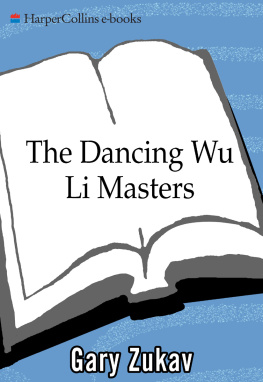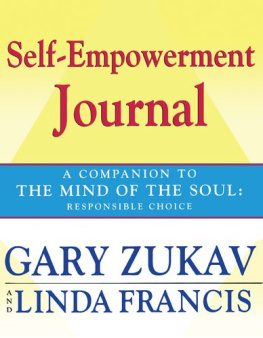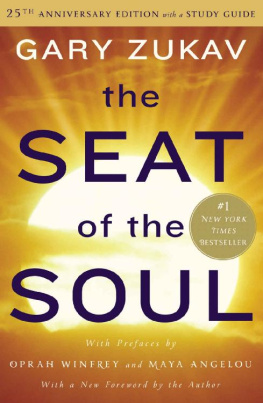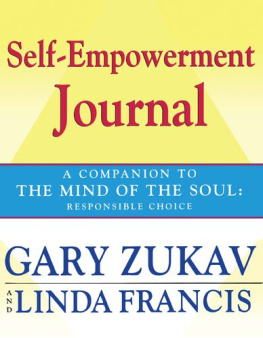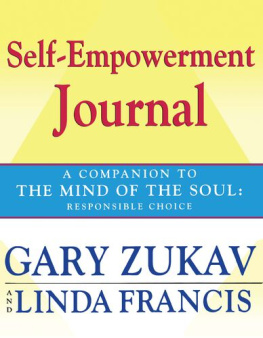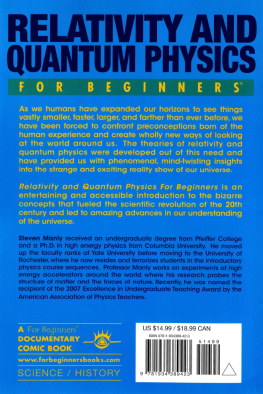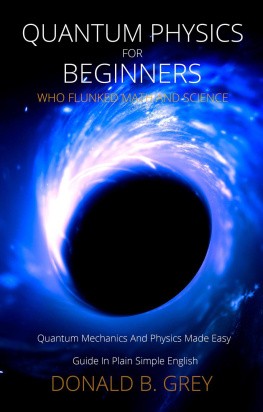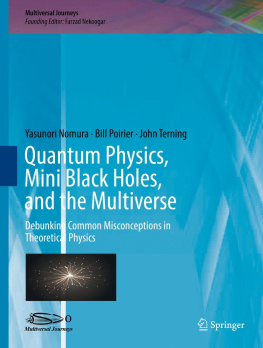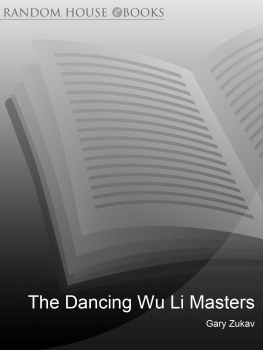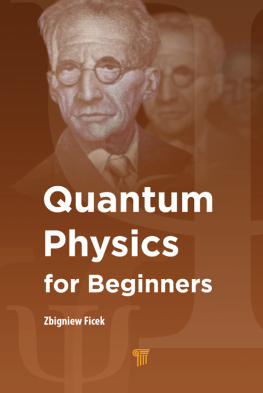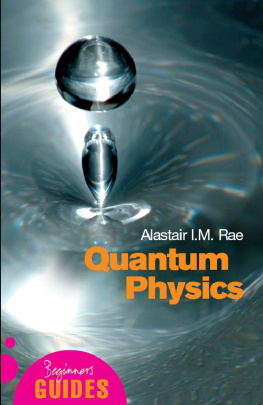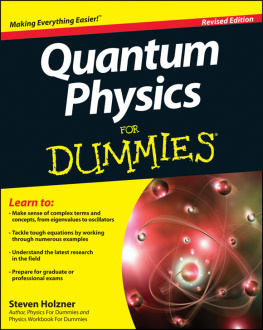WU LI? (Introduction)
Big Week at Big Sur
Physics (3), Esalen (4), Chinese and English (56), Wu Li Masters (7), scientists and technicians (10), the sodium spectrum (1112), Bohrs model of the atom (14).
Einstein Doesnt Like It
The new physics and the old physics (20), Newtons physics (22), the Great Machine (24), do we create reality? (30), the myth of objectivity (32), subatomic particles (34), statistics (35), the kinetic theory of gases (36), probability (37), the Copenhagen Interpretation of Quantum Mechanics (40), pragmatism (41), split-brain analysis (42), summary of the new physics and the old physics (44).
PATTERNS OF ORGANIC ENERGY
(Quantum Mechanics)
Living?
Organic and inorganic (49), Max Planck (52), discontinuous (53), black-body radiation (54), Plancks constant (56), Albert Einstein (57), Einsteins theory of the photoelectric effect (58), waves, wavelengths, frequencies, and amplitudes (60), diffraction (63), Youngs double-slit experiment (66), the wave-particle duality (70), probability waves (72).
What Happens
The procedure of quantum mechanics (74), the region of preparation (75), the region of measurement (75), the observed system (76), the observing system (76), the Schrdinger wave equation (77), observables (77), particles as correlations (78), wave functions (80), probability functions (81), quantum jumps (83), the Theory of Measurement (87), the metaphysics of quantum mechanics (88), the Many Worlds Interpretation of Quantum Mechanics (92), Schrdingers cat (94), Doubting Thomas (97).
MY WAY (Quantum Mechanics)
The Role of I
The in hereout there illusion (102), complementarity (103), Compton scattering (103), Louis de Broglie (106), matter waves (107), Erwin Schrdinger (110), standing waves (110), the Pauli exclusion principle (114), the Schrdinger wave equation (again) (114), Max Born (117), probability waves (again) (117), the quantum model of the atom (119), Werner Heisenberg (121), the S Matrix (122), the Heisenberg uncertainty principle (123), the tables are turned (127).
NONSENSE (Relativity)
Beginners Mind
Nonsense (131), the beginners mind (132), the special theory of relativity (134), the Galilean relativity principle (138), inertial co-ordinate systems (138), Galilean transformations (140), the constancy of the speed of light (142), the ether (145), the Michelson-Morley experiment (145), FitzGerald contractions (148), Lorentz transformations (148).
Special Nonsense
The special theory of relativity (150), proper and relative length and time (155), Terrells rotation explanation of relativistic contraction (159), relativistic mass increase (162), simultaneity (162), the space-time continuum (167), the space-time interval (171), Hermann Minkowski (173), mass-energy (173), conservation laws (176).
General Nonsense
Gravity and acceleration (181), inside and outside the elevators (181), gravitational mass and inertial mass (186), the geography of the space-time continuum (188), Euclidean geometry (191), the revolving circles (193), non-Euclidean geometry (196), Einsteins ultimate vision (200), Mercurys perihelion (201), starlight deflection (203), gravitational redshift (204), Black Holes (205), the illusion of force (208), the illusion of nonsense (209).
I CLUTCH MY IDEAS (Particle Physics)
The Particle Zoo
The barriers to change (213), the hall of mirrors (215), the new world view (215), particle physics (216), bubble chambers (218), the dance of creation and annihilation (219), what made the tracks? (221), quantum field theory (222), the need to pretend (224), particle masses (226), massless particles (228), charge (229), spin (230), angular momentum (231), quantum numbers (234), anti-particles (235).
The Dance
Space-time diagrams (237), Feynman diagrams (239), the dance of creation and annihilation (again) (240), anti-particles (again) (242), the illusion of time (245), entropy (246), virtual photons (247), the electromagnetic force (251), Hideki Yukawa (252), the strong force (252), virtual mesons (254), self-interactions (254), gravity (260), the weak force (260), virtual photons (again) (261), vacuum diagrams (266), conservation laws (269), symmetries (271), quarks (272), the S Matrix (again) (272).
ENLIGHTENMENT
(Quantum Logic & Bells Theorem)
More Than Both
Physics and enlightenment (283), Bells theorem and quantum logic (285), John von Neumann (286), the description of a wave function (286), Projections as Propositions (288), David Finkelstein (290), symbols and experience (290), logos and mythos (290), the distributive law (292), polarization of light (293), the third polarizer paradox (297), superpositions (299), quantum logic (301), proof (301), transition tables (303), lattices (305), von Neumanns disproof of the distributive law (302), quantum topology (311).
The End of Science
Enlightenment and unity (312), J. S. Bell (313), quantum connectedness (313), the Einstein-Podolsky-Rosen thought experiment (314), superluminal communication (319), the principle of local causes (320), Bells theorem (322), the Freedman-Clauser experiment (323), the Aspect experiment (327), contrafactual definiteness (332), superdeterminism (333), the Many Worlds Theory (again) (333), summary (335), the philosophy of quantum mechanics (338), David Bohm (339), unbroken wholeness (339), implicate order (340), the new thought instrument (341), eastern psychologies (342), the metaphor of physics (343), Kali (345), the Path without Form (347), the circle dance (348).
Thomas Young
1803 (double-slit experiment)
Albert Michelson, Edward Morley
1887 (Michelson-Morley experiment)
George Francis FitzGerald
1892 (FitzGerald contractions)
Hendrik Antoon Lorentz
1893 (Lorentz transformations)
Electron
1897 (discovered)
Max Planck
1900 (quantum hypothesis)
Albert Einstein
1905 (photon theory)
1905 (special theory of relativity)
Hermann Minkowski
1908 (space-time)
Nucleus
1911 (discovered)
Niels Bohr
1913 (specific-orbits model of the atom)
Albert Einstein
1915 (general theory of relativity)
Louis de Broglie
1924 (matter waves)
Niels Bohr, H. A. Kramers, John Slater
1924 (first concept of probability waves)
Wolfgang Pauli
1925 (exclusion principle)
Werner Heisenberg
1925 (matrix mechanics)
Erwin Schrdinger
1926 (Schrdinger wave equation)
1926 (equates matrix mechanics with wave mechanics)
1926 (visits Bohr in Copenhagen to attack the idea of quantum jumpsand gets the flu)
Max Born
1926 (probability interpretation of wave function)
Niels Bohr
1927 (complementarity)
Clinton Davisson, Lester Germer
1927 (Davisson-Germer experiment)
Werner Heisenberg
1927 (uncertainty principle)
Copenhagen Interpretation of Quantum Mechanics

